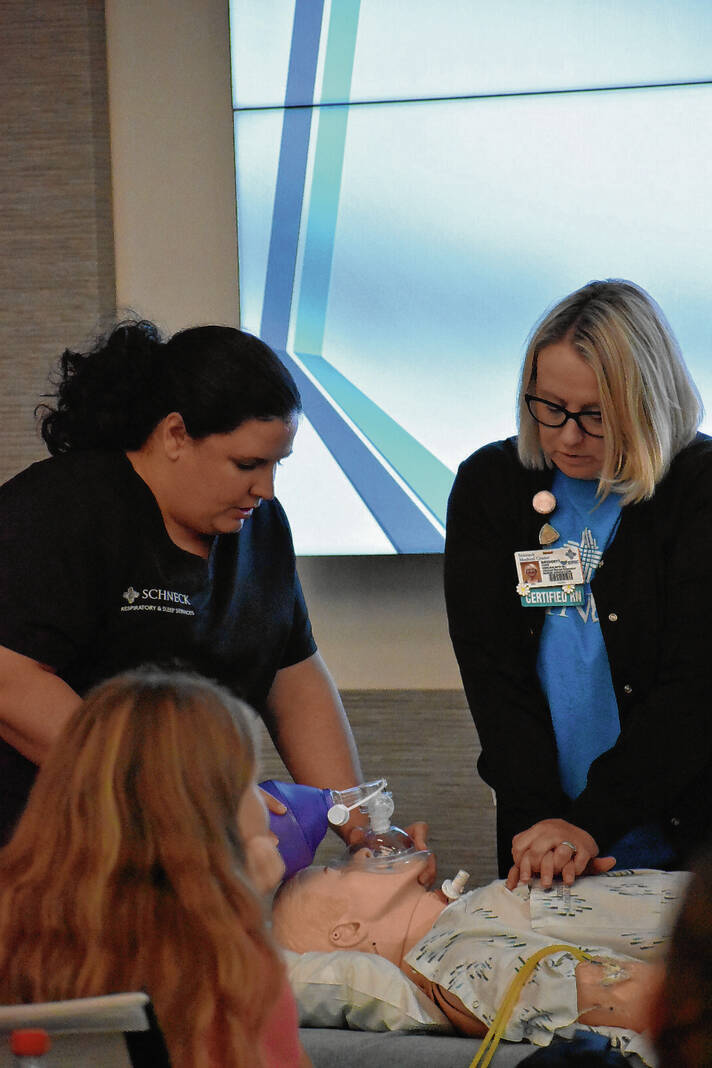
Respiratory therapist Brittaney Haynes, left, reenacting what would happen if a patient was struggling to breathe while Bridgett Cope, a nurse and child resource educator, performs chest compressions July 16 at Schneck Medical Center.
Chey Smith | The Tribune
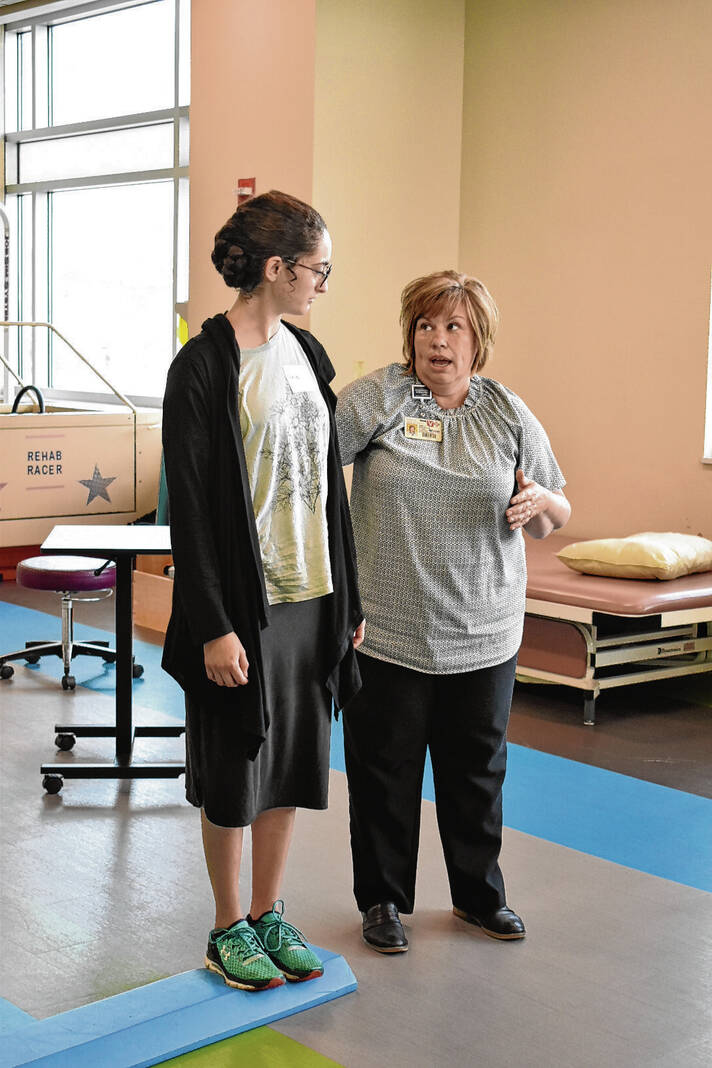
Physical Therapist Holly Wischmeier, right, demonstrating the connection between balance and sight, using Bella Carmichael to help make this point July 16 at Schneck Medical Center.
Chey Smith | The Tribune
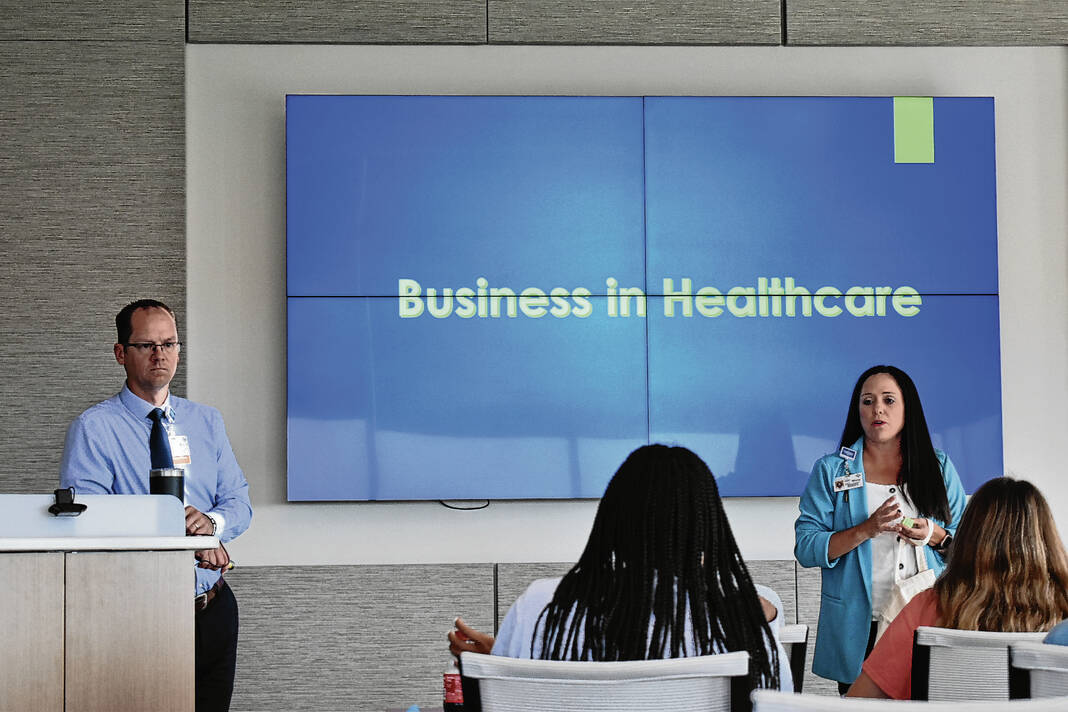
Schneck Medical Center staffers John Doriot and Mindy Roeder giving a presentation on business in healthcare at July 16 at the Seymour hospital.
Chey Smith | The Tribune
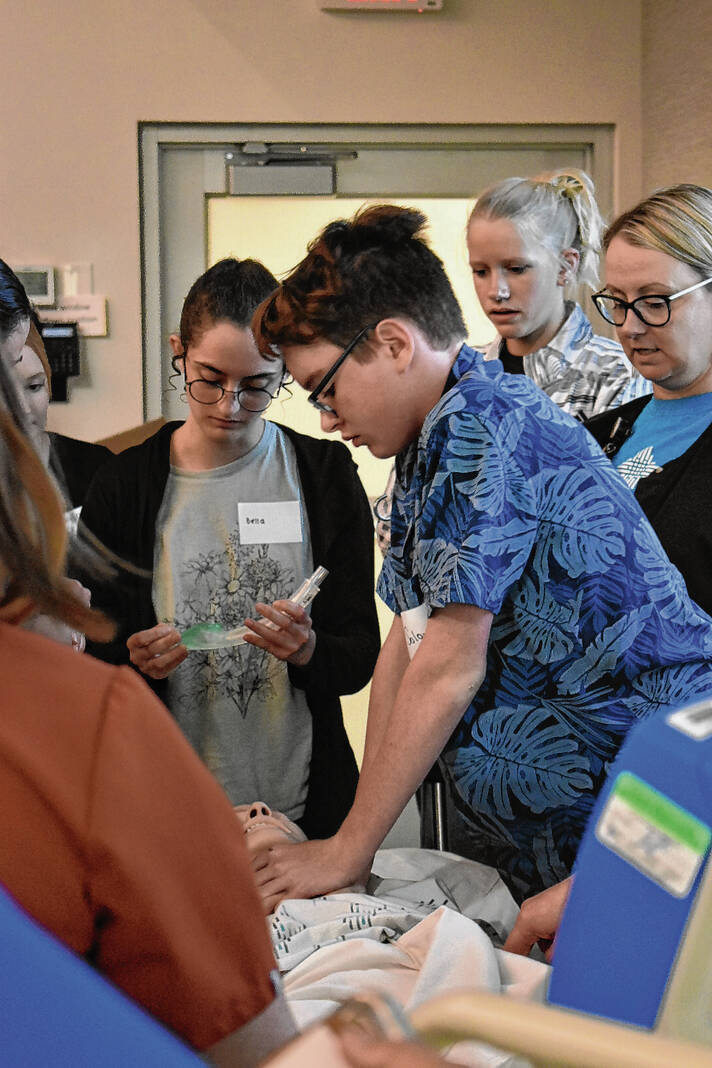
Student Solomon Shaw practices chest compressions on a dummy during a simulation July 16 at Schneck Medical Center.
Chey Smith | The Tribune
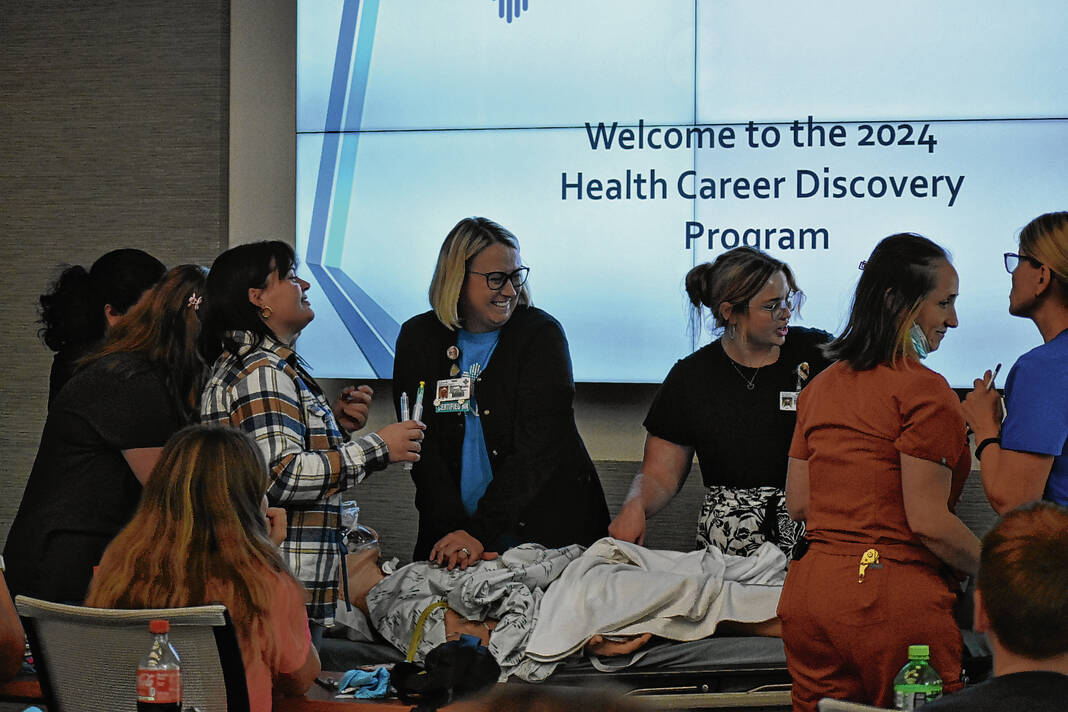
The Code Team after bringing in the dummy, preparing to simulate what one would do when a patient is having chest pains and cannot breathe July 16 at the Schneck Medical Center.
Chey Smith | The Tribune
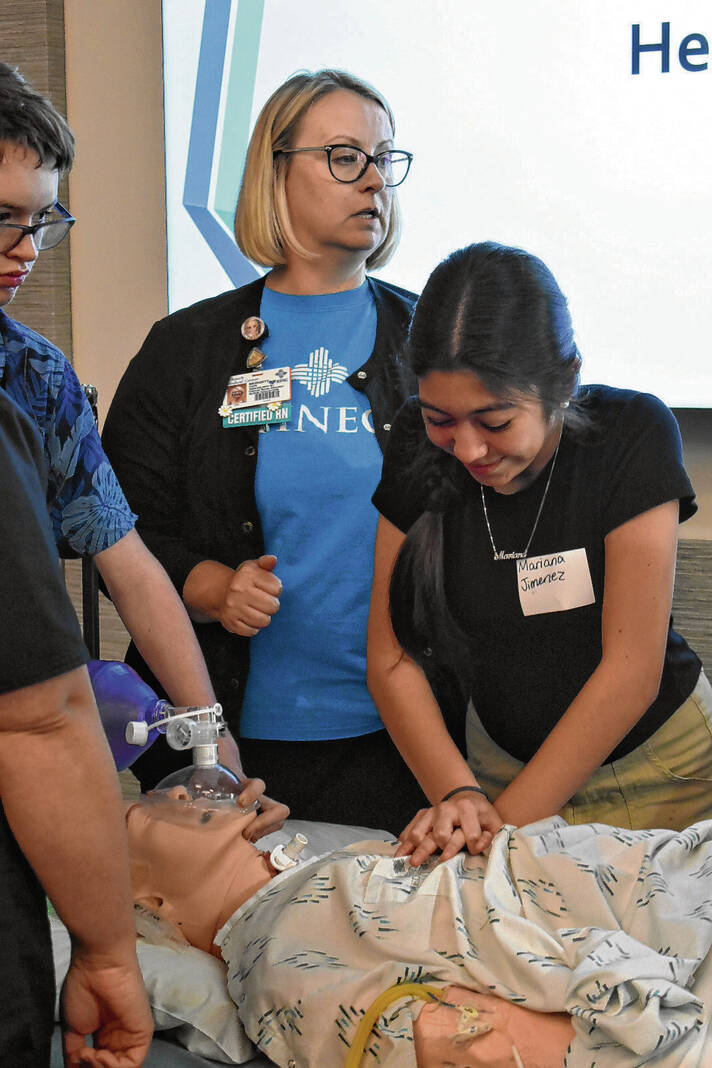
Bridgett Cope, a nurse and clinical resource educatorm, left, looks over at a monitor while teen Mariana Jimenez performs chest compressions on the dummy July 16 at the Schneck Medical Center
Chey Smith | The Tribune
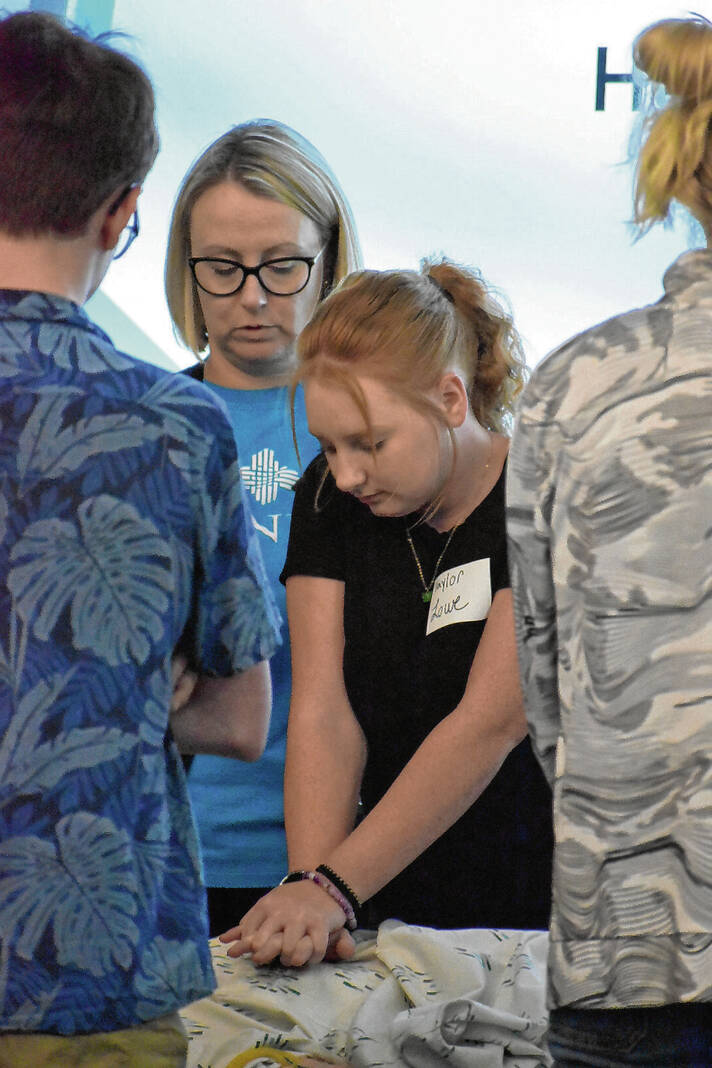
Student Taylor Lowe performs chest compressions on the dummy during the Simulation Code on July 16 at Schneck Medical Center.
Chey Smith | The Tribune
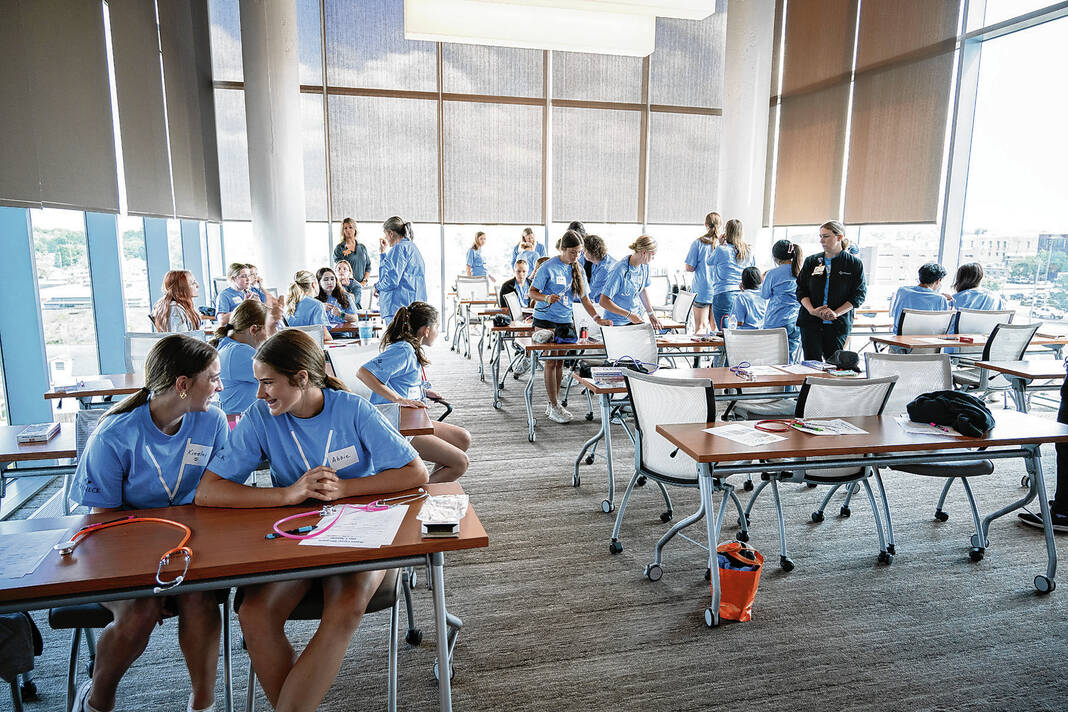
Students that gathered during Schneck Medical Center’s Health Career Discovery event in June.
Through the Health Career Discovery Program, Schneck Medical Center staff strive to show teenagers that working at a hospital is not limited to just doctors and nurses.
During this two-day program, the hospital hosts multiple speakers that go through presentations, activities, demonstrations and skits to educate local youth, from grades fifth through 12th, about their potential future in healthcare.
On the first day of the program July 16, Amy Hatton, who works in junior volunteer services, and Emily Burgess from HR introduced themselves to the room before leading the crowd to their first station — rehab.
Physical therapist Holly Wischmeier, who has been in the field for 29 years, spoke to the students about what her job is all about. To give an example of what she does, she called a volunteer up, Bella Carmichael, to stand with eyes closed on the floor in comparison to on a foam beam, which caused her to lose her balance quicker.
“We work on different things (like this) to challenge people’s balance,” Wischmeier said.
Wischmeier also showed the students some tools and techniques she uses as a physical therapist including ultrasound and fluidotherapy.
Following the showcase of Schneck’s therapy services, Mindy Roeder and John Doriot gave a presentation about the business side of healthcare. Roeder and Doriot gave their experiences with the medical center, away from the typical jobs people may think of at a hospital.
Doriot, having been at Schneck for 18 years, began his career in physical therapy, but now takes on an administrative role, specializing in information technology.
“There’s a lot of ways that you can get into a career that’s business related in healthcare with on-the-job training,” he said. “We have a lot of things that you don’t have to have any background in to get started here at the hospital.”
He discussed the flexible hours and positions that can work especially well for those juggling school, having first- through third-shift options available.
During their presentation, they highlighted the job interview process, giving advice, tips and methods to get the position these kids may be striving for.
One helpful tip given was to keep a tally of examples at work where you have encountered conflict and other unique opportunities on your phone that you can update so that when you are faced with questions related to experiences in an interview, you can give accounts of things you may otherwise forget.
“Make it easier on yourself and jot some things down,” Roeder said.
They passed out papers with multiple words of wisdom they had gathered by asking other directors for pet peeves in an interview. Some of these pieces of advice include embracing change, following through, being accessible, responding quickly and efficiently to emails, providing quality customer service and being enthusiastic.
Another activity was a fill-in-the-blank, with definitions on the left and their corresponding words on the right. Some jobs that were included to show the variety of positions at the hospital include provider relations, accounts payable, privacy officer, risk management, materials management, cybersecurity manager and switchboard operator.
This presentation helped prepare these kids for any career path they take, but also introduced many of them to positions Schneck and other medical facilities have that many may overlook.
Following the presentation, a new pair of Schneck employees walked into the classroom, seemingly ready to start their own presentation, before Kimberly Cox, a registered nurse, grasped her chest and claimed that it hurt. As she was helped out of the room from the door on the left, a group rushed a stretcher in from the righthand side, a dummy laying down with monitors beeping.
This was the beginning of the Code Team simulation.
Staff came around to the tables where students were sat, putting dummy torsos down to lead the kids through practicing chest compressions. Kids were also invited to the front of the room to practice with the staff, taking turns performing chest compressions to resuscitate the dummy.
After the high energy simulation, the staff began their own presentation about nursing education. They set up games and stations for the students to participate in.
Schneck Medical Centers hosted more activities within their program on day two, the following Thursday, which included a nutrition demonstration and information on emergency services.
